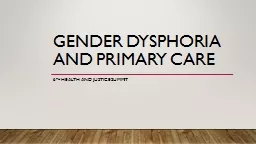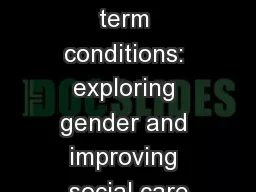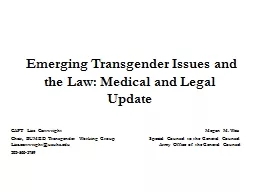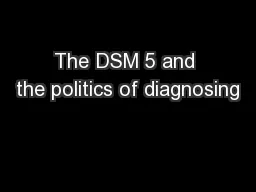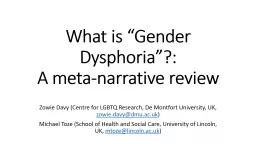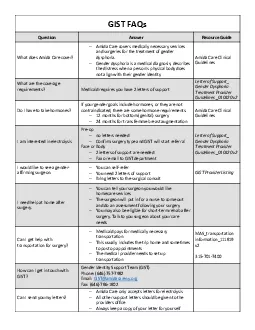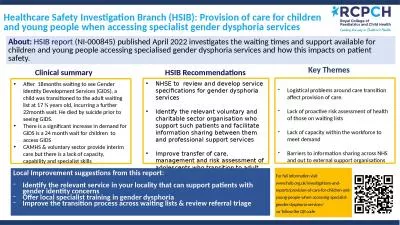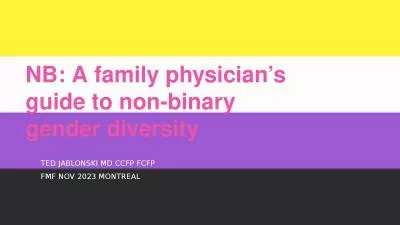PPT-Gender Dysphoria and Primary Care
Author : dunchpoi | Published Date : 2020-06-17
6 th Health and Justice Summit Terminology Trans An umbrella term Transgender Man A term for a transgender individual who currently identifies as a man see also
Presentation Embed Code
Download Presentation
Download Presentation The PPT/PDF document "Gender Dysphoria and Primary Care" is the property of its rightful owner. Permission is granted to download and print the materials on this website for personal, non-commercial use only, and to display it on your personal computer provided you do not modify the materials and that you retain all copyright notices contained in the materials. By downloading content from our website, you accept the terms of this agreement.
Gender Dysphoria and Primary Care: Transcript
Download Rules Of Document
"Gender Dysphoria and Primary Care"The content belongs to its owner. You may download and print it for personal use, without modification, and keep all copyright notices. By downloading, you agree to these terms.
Related Documents

